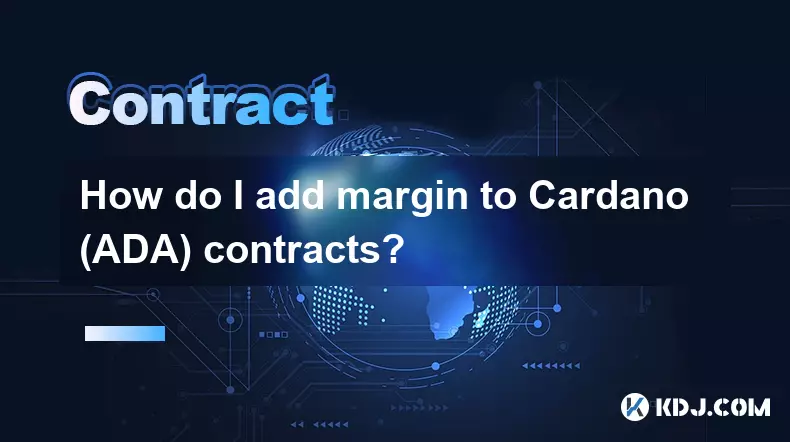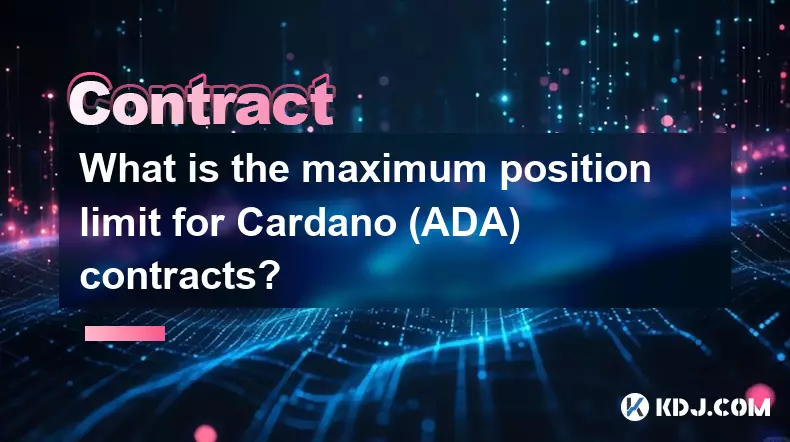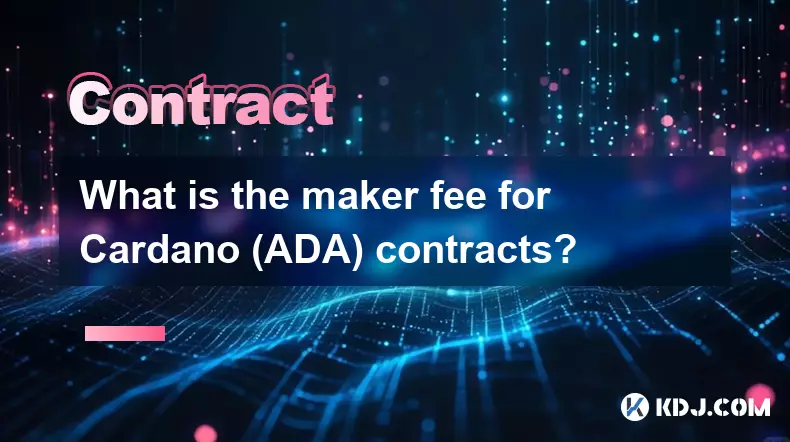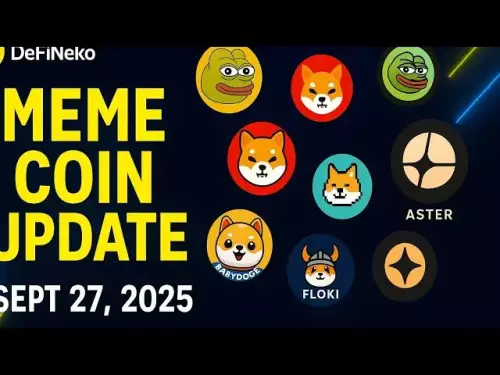-
 bitcoin
bitcoin $109523.663807 USD
-0.13% -
 ethereum
ethereum $4019.526508 USD
2.06% -
 tether
tether $1.000482 USD
0.00% -
 xrp
xrp $2.776815 USD
0.18% -
 bnb
bnb $958.942396 USD
0.12% -
 solana
solana $204.294698 USD
3.84% -
 usd-coin
usd-coin $0.999693 USD
0.00% -
 dogecoin
dogecoin $0.232115 USD
2.09% -
 tron
tron $0.338028 USD
0.84% -
 cardano
cardano $0.790920 USD
1.50% -
 hyperliquid
hyperliquid $44.871443 USD
5.60% -
 ethena-usde
ethena-usde $1.000322 USD
0.04% -
 chainlink
chainlink $21.034165 USD
2.60% -
 avalanche
avalanche $28.794831 USD
-0.54% -
 stellar
stellar $0.360466 USD
1.24%
Leverage multiple misunderstandings in contract trading: Why is high leverage prone to liquidation?
Leverage in crypto trading lets you borrow funds to boost potential profits, but it also raises liquidation risks as price swings can quickly wipe out your position.
Jun 15, 2025 at 05:29 pm

What Is Leverage in Contract Trading?
In the world of cryptocurrency contract trading, leverage refers to the use of borrowed funds to increase the potential return of an investment. Traders can open positions much larger than their account balance by borrowing capital from the exchange or platform. This is particularly common in futures and perpetual contracts, where leverage ratios like 10x, 20x, or even 100x are frequently advertised.
However, while leverage amplifies gains, it also significantly increases the risk of liquidation—a forced exit of a trader’s position due to insufficient margin. The higher the leverage used, the smaller the price movement required to trigger this liquidation event.
Leverage multiplies both profits and losses
, which is why understanding how it works is crucial before diving into high-leverage trading.
How Does Liquidation Work?
Liquidation occurs when a trader's available margin falls below the maintenance margin requirement. At that point, the exchange automatically closes the position to prevent further losses. This mechanism protects both the trader and the platform from negative balances.
Each trading platform has its own liquidation engine, but most operate on similar principles. When a trader opens a leveraged position, they must maintain a certain percentage of equity in their account relative to the total value of the position.
- Initial margin is the amount required to open a position.
- Maintenance margin is the minimum amount needed to keep the position open.
- If the equity drops below the maintenance margin level, the system initiates auto-liquidation.
High leverage reduces the buffer between entry price and liquidation price
, making even small market movements dangerous.
Misconception: More Leverage Equals More Profit
One of the most widespread misconceptions in contract trading is that using higher leverage directly leads to more profit. While it does increase exposure and potential returns, it also exposes traders to greater risks.
For example, with 10x leverage, a 5% move against a trader could result in a 50% loss. With 100x leverage, the same 5% move would wipe out the entire position. Many novice traders believe that using the maximum leverage offered will help them 'get rich quick,' but this mindset often results in rapid liquidations.
Additionally, high-leverage trading requires precise timing and strong risk management skills, which many traders lack. Emotional decision-making combined with excessive leverage often leads to significant losses.
Why High Leverage Increases Liquidation Risk
The primary reason high leverage makes liquidation more likely is that it reduces the distance between entry price and liquidation price. In other words, the amount of adverse price movement needed to trigger liquidation becomes very small.
Let’s break down a simple example:
- A trader opens a $10,000 long position with 10x leverage.
- Their initial margin is $1,000.
- The liquidation price might be 10% away from the entry price.
Now, if the same trader uses 100x leverage:
- Initial margin is only $100.
- The liquidation price could be just 1% away from the entry price.
This illustrates how increasing leverage dramatically lowers the threshold for liquidation. Even slight market volatility can cause a position to be closed involuntarily.
Furthermore, slippage during volatile conditions can cause the actual liquidation price to deviate from the estimated one, leading to unexpected outcomes.
Common Misunderstandings About Margin and Leverage
Many traders confuse margin and leverage, thinking they are interchangeable terms. While related, they are not the same.
- Margin is the collateral deposited to open and maintain a leveraged position.
- Leverage is the ratio of the position size to the margin used.
Another misunderstanding is believing that increasing leverage increases the required margin. In reality, higher leverage reduces the required margin, which in turn makes the position more vulnerable to liquidation.
Traders also often overlook the impact of funding fees in perpetual contracts. These recurring costs eat into profits and reduce available margin over time, especially in long-term positions opened with high leverage.
Misjudging the relationship between margin and leverage leads to poor risk assessment
, increasing the likelihood of premature liquidation.
Operational Example: How to Calculate Liquidation Price
To better understand how leverage affects liquidation risk, let’s walk through a step-by-step calculation of the liquidation price for a BTC/USDT perpetual contract trade.
Assume the following:
- Entry price: $30,000
- Position size: 0.1 BTC
- Leverage: 50x
- Maintenance margin rate: 0.4%
- Funding fee: negligible for this example
- Total position value = 0.1 BTC × $30,000 = $3,000
- Required margin = $3,000 / 50 = $60
- Maintenance margin = $3,000 × 0.4% = $12
- Available margin before liquidation = $60 – $12 = $48
Now, we calculate how much price movement (in USD) would deplete $48 of margin:
- Liquidation distance = $48 / 0.1 BTC = $480
- Liquidation price = $30,000 – $480 = $29,520
This means if Bitcoin drops to $29,520, the position gets liquidated.
This detailed calculation shows how sensitive high-leverage positions are to price fluctuations
, reinforcing the need for caution.
Frequently Asked Questions
Q: Can I avoid liquidation entirely by using stop-loss orders?A: While stop-loss orders can help manage risk, they do not guarantee protection against liquidation. During extreme volatility or market gaps, stop-loss levels may not execute at the desired price, and liquidation engines may still activate.
Q: Why do exchanges offer such high leverage if it's risky?A: Exchanges offer high leverage as a competitive feature to attract traders. It allows users to take large positions with minimal capital, which can increase trading volume and fees for the platform. However, it also comes with increased responsibility on the trader’s part to manage risk effectively.
Q: Is low leverage always safer than high leverage?A: Generally, lower leverage provides a larger buffer before liquidation, reducing risk. However, it’s not inherently safer unless accompanied by sound strategy, proper position sizing, and disciplined risk management.
Q: What happens after a position is liquidated?A: Once a position is liquidated, the system closes the trade automatically. Any remaining margin after covering losses is returned to the trader’s account. Some platforms charge a liquidation fee, which further reduces the remaining balance.
Disclaimer:info@kdj.com
The information provided is not trading advice. kdj.com does not assume any responsibility for any investments made based on the information provided in this article. Cryptocurrencies are highly volatile and it is highly recommended that you invest with caution after thorough research!
If you believe that the content used on this website infringes your copyright, please contact us immediately (info@kdj.com) and we will delete it promptly.
- Crypto Presales: Is $BFX the Next Big Thing?
- 2025-09-28 00:25:12
- Kraken's IPO Ambitions: Navigating Valuation in a Recovering Crypto Market
- 2025-09-28 00:25:12
- Bitcoin's Bumpy Ride: Navigating Risks and Potential Downturns
- 2025-09-28 00:30:01
- Sleep Token's Macabre Metal Mastery: A Deep Dive
- 2025-09-28 00:30:01
- AI-Driven Metaverse: Building Blockchain Trust in the Digital Frontier
- 2025-09-28 00:30:01
- Lyno AI: The Altcoin Presale Primed for a 1400% Surge?
- 2025-09-28 00:30:12
Related knowledge

How do I enable the "scalping-only" mode for Cardano (ADA) contracts?
Sep 24,2025 at 03:19am
Understanding Scalping Strategies in Crypto Derivatives1. Scalping in cryptocurrency trading refers to executing multiple short-term trades within min...

How do I add margin to Cardano (ADA) contracts?
Sep 27,2025 at 07:54pm
Understanding Margin in Cardano (ADA) Smart ContractsCardano operates on a proof-of-stake blockchain that supports smart contracts through its Plutus ...

What is the maximum position limit for Cardano (ADA) contracts?
Sep 23,2025 at 11:00pm
Understanding ADA Futures and Derivatives Market Structure1. Cardano (ADA) futures contracts are offered by several major cryptocurrency derivatives e...

What is the maker fee for Cardano (ADA) contracts?
Sep 26,2025 at 09:01am
Understanding Maker Fees in Cardano (ADA) Contracts1. The concept of maker fees applies broadly across decentralized exchanges and smart contract plat...

How can I view open interest in Cardano (ADA) contracts?
Sep 24,2025 at 07:36am
Understanding Open Interest in Cardano Derivatives1. Open interest refers to the total number of outstanding derivative contracts, such as futures or ...

How do I modify the price of a pending order in Cardano (ADA) contracts?
Sep 27,2025 at 01:00am
Understanding Pending Orders in Cardano Smart Contracts1. Cardano operates on a proof-of-stake blockchain that supports smart contracts through its Pl...

How do I enable the "scalping-only" mode for Cardano (ADA) contracts?
Sep 24,2025 at 03:19am
Understanding Scalping Strategies in Crypto Derivatives1. Scalping in cryptocurrency trading refers to executing multiple short-term trades within min...

How do I add margin to Cardano (ADA) contracts?
Sep 27,2025 at 07:54pm
Understanding Margin in Cardano (ADA) Smart ContractsCardano operates on a proof-of-stake blockchain that supports smart contracts through its Plutus ...

What is the maximum position limit for Cardano (ADA) contracts?
Sep 23,2025 at 11:00pm
Understanding ADA Futures and Derivatives Market Structure1. Cardano (ADA) futures contracts are offered by several major cryptocurrency derivatives e...

What is the maker fee for Cardano (ADA) contracts?
Sep 26,2025 at 09:01am
Understanding Maker Fees in Cardano (ADA) Contracts1. The concept of maker fees applies broadly across decentralized exchanges and smart contract plat...

How can I view open interest in Cardano (ADA) contracts?
Sep 24,2025 at 07:36am
Understanding Open Interest in Cardano Derivatives1. Open interest refers to the total number of outstanding derivative contracts, such as futures or ...

How do I modify the price of a pending order in Cardano (ADA) contracts?
Sep 27,2025 at 01:00am
Understanding Pending Orders in Cardano Smart Contracts1. Cardano operates on a proof-of-stake blockchain that supports smart contracts through its Pl...
See all articles









































































